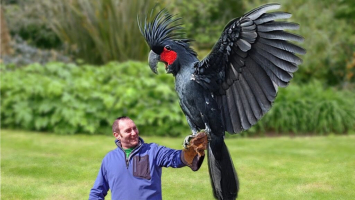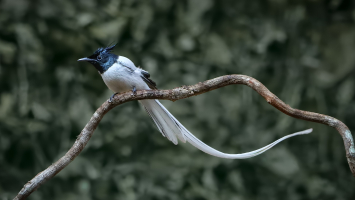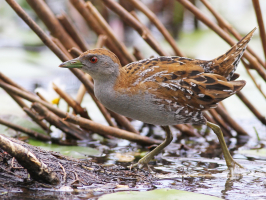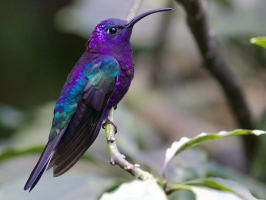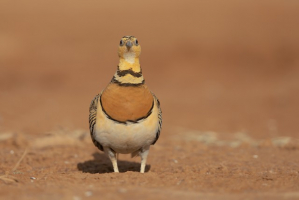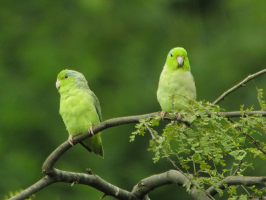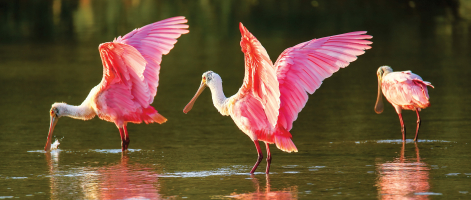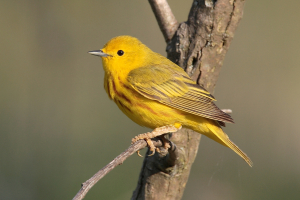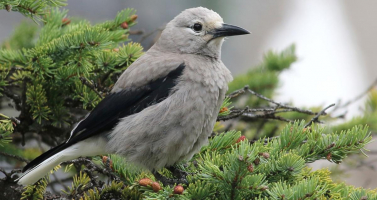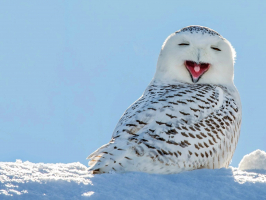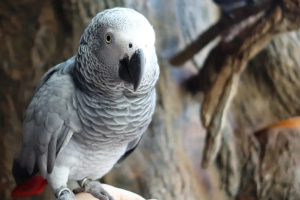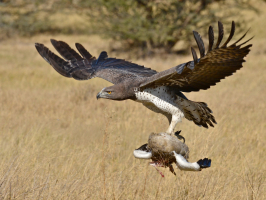Top 10 World's Most Dangerous Birds
For most people, birds are generally classified as safe animals, which is quite true. Most birds are small in size and are not equipped with offensive weapons ... read more...sufficient to cause significant injury. However, birds are the most diverse phylum in the animal kingdom, they come in all shapes and sizes, some quite large. In the list below, there are only a few birds the size of humans that are actually dangerous. But size and strength are not the only weapons of birds. Many small birds also have other powerful weapons, let's explore with Toplist.info!
-
Cassowaries are the only members of the family Casuariidae and belong to the order Casuariiformes, which also includes the emu. Three species—some researchers consider them six—each with many races coexist in habitats spread across sections of Australia and New Guinea. The cassowary has a reputation for killing people with cutting foot strikes because the innermost toe of each of its three toes possesses a long, dagger-like nail. The bird has been seen racing as fast as 50 km/h (31 mph) along slender paths through the jungle.
Cassowaries are curious animals that occasionally attack, but assaults on people are rather uncommon. Attacks that do take place frequently include asking people for food. One of the most recent occurrences occurred in Queensland, Australia, in 2012 when a tourist was booted by a cassowary off a ledge and into a body of water but otherwise escaped unscathed. One of the most well-known attacks, and the only one known to have resulted in a definite death, was in 1926 when a cassowary pounced on a member of a party of teenage lads hunting cassowaries and killed him. The bird's long toenail sliced the boy's jugular vein.
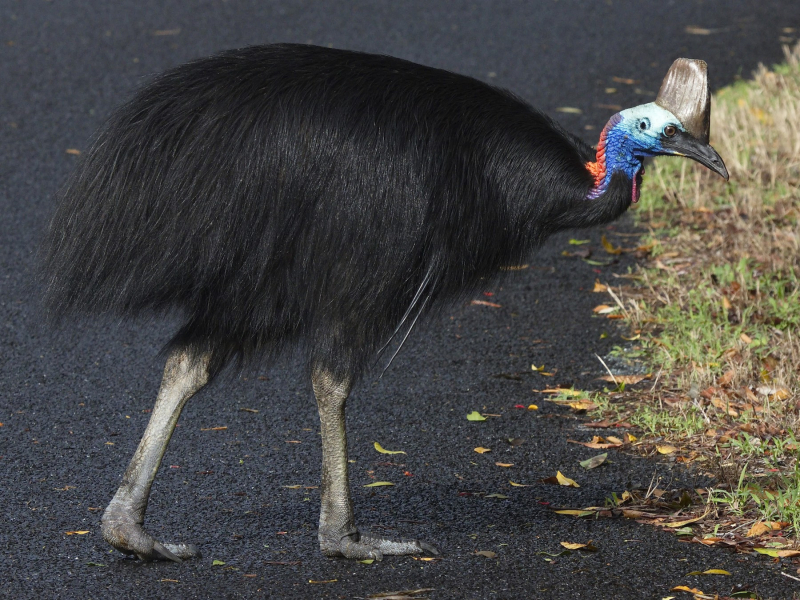
Via: eBird 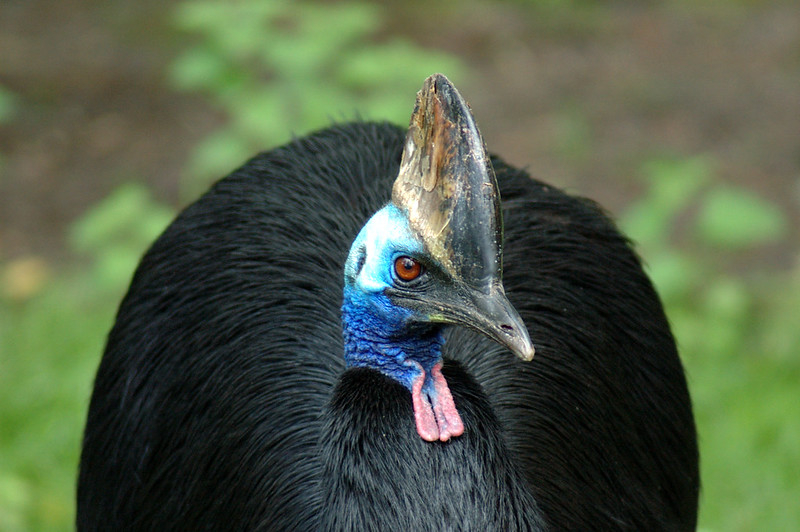
Via: BirdNote -
Ostriches are flightless birds found only in open countries in Africa. Adult males of these colossal birds, which can reach heights of 2.75 meters (approximately 9 feet), with over half of that height being made up of the neck, can weigh more than 150 kilograms (330 pounds). Depending on the season, ostriches can be seen alone, in couples, in small flocks, in large groups, or in any combination of these. The ostrich relies on its powerful legs, which are unusually two-toed with the primary toe grown almost as a hoof, to flee from its predators, who are primarily humans and larger beasts. An ostrich under fear can run at a pace of 72.5 kilometers per hour (45 miles per hour). When confronted, it can kick out with such force that lions and other huge predators can be killed. Kicking and stabbing deaths are uncommon; most assaults happen when people provoke the birds.
The American artist Johnny Cash, who had an exotic animal park including ostriches on his property, was involved in one of the most intriguing ostrich attack episodes. In 1981, Cash frequently ran with a male hostile ostrich while out on walks in the woods. When Cash once flung a 6-foot stick at the bird, the animal evaded the blow and stabbed at Cash with its foot. The strike caught Cash in the stomach, and according to Cash, if it weren't for a sturdy belt buckle, the ostrich's toe claw would have severed his gut and killed him.
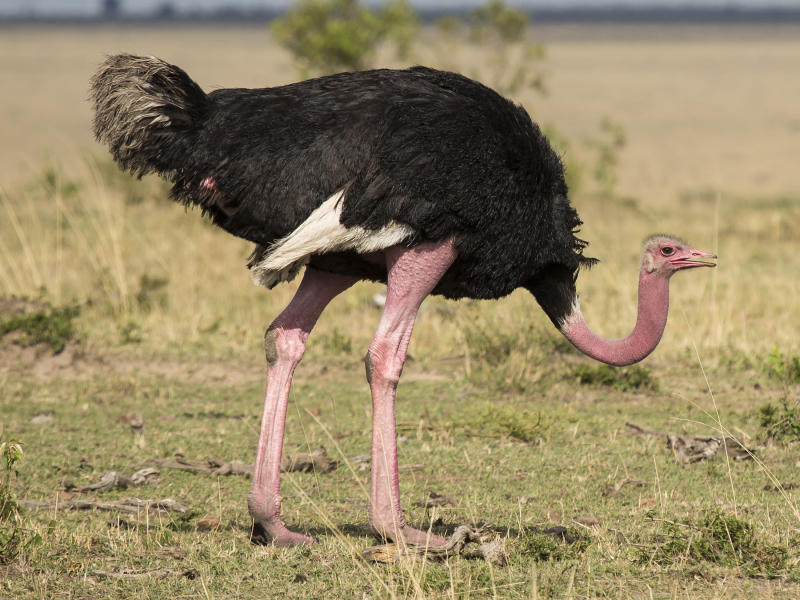
Via: eBird 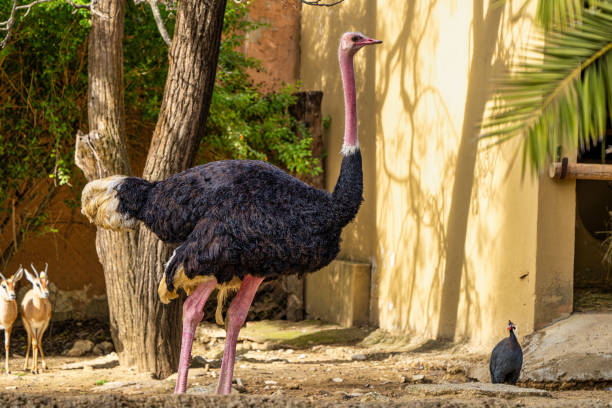
Via: iStock -
The emu is the second-largest member of the ratites and extant species of bird in the world. They weigh between 40 and 132 pounds and are between 59 and 75 inches tall. They are native to Australia and can be found there in both savannahs and woodlands, however, they tend to stay away from drier areas. They have strong, long legs that allow them to run at speeds of up to 30 mph. Depending on their surroundings, their plumage might vary, but in general, it is brownish-beige with streaks of black and red.
Emus spend the day foraging and consuming seeds, grasses, fruits, and insects for food. Unlike most birds, only the males are in charge of building the nest and caring for the eggs. Also, female emus frequently behave more aggressively than male emus and may engage in physical conflict over prospective mates. Despite being considered a species of Least Concern, they are nevertheless in danger from habitat loss, car accidents, and invasive predators. Under the correct circumstances, emus' toe claws can eviscerate creatures, just like those of cassowaries and ostriches, but fatalities to humans are incredibly uncommon. More than 100 emu assaults resulting in a variety of injuries were reported in zoos, emu farms, and wild-animal parks in Australia alone in 2009, as well as elsewhere in the world.
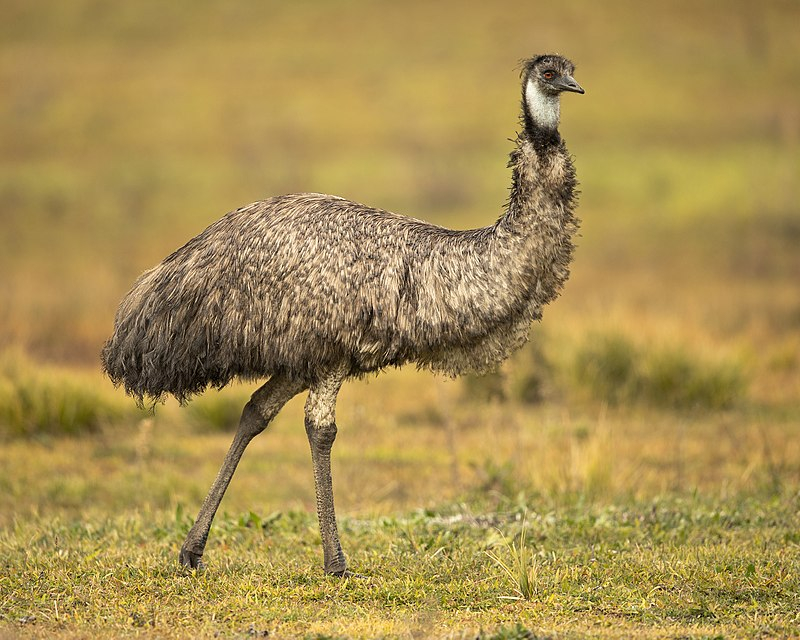
Via: Wikipedia 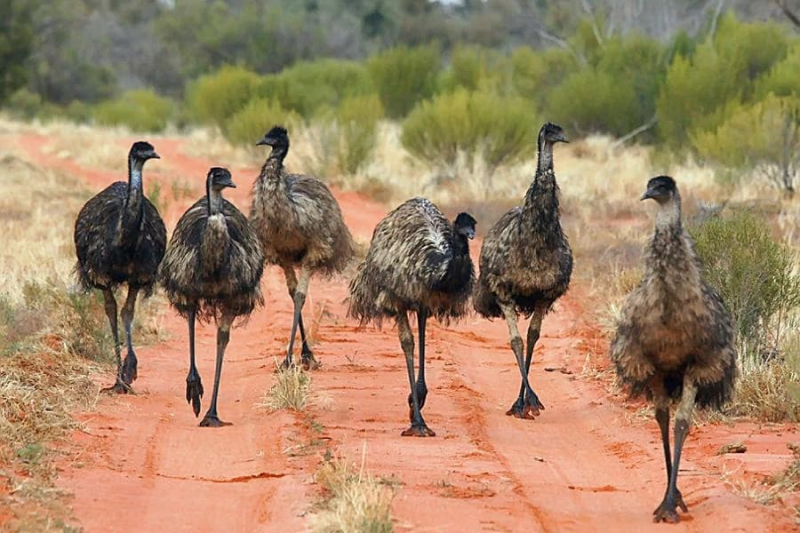
Via: eBird -
Lammergeiers, which are also called bearded vultures, are big eaglelike vultures of the Old World (family Accipitridae). These birds frequently grow to be longer than 1 meter (40 inches) and have a wingspan of around 3 meters (10 feet). From Central Asia and eastern Africa to Spain, they live in mountainous areas and eat carrion, particularly bones, which they drop from heights of up to 80 meters (260 feet) onto flat rocks below. As a result, the victim's bones are broken apart, giving the birds access to the marrow.
The Athenian playwright Aeschylus is reported to have died in Gela (on Sicily's south coast) when a lammergeier threw a tortoise on his bald head after mistaking it for a stone. Attacks on humans are either uncommon or even anecdotal. Although Aeschylus did die at Gela, experts believe that the story describing the strange cause of his death was fabricated by a later comic writer.
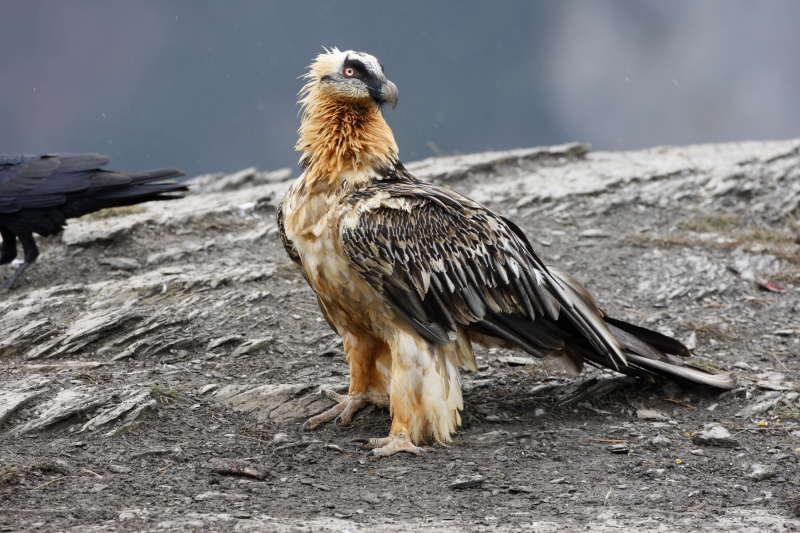
Via: Tibetpedia 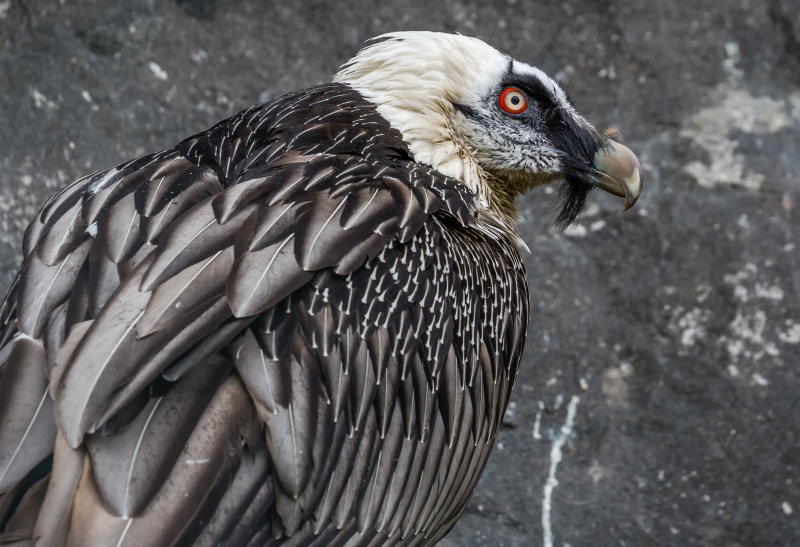
Via: Tibetpedia -
All species of owls have a history of attacking humans to protect their young, their partners, or their territories. Innocent joggers and hikers are frequent targets. Attacks by owls seldom result in fatalities, and victims frequently flee without being hurt. Particularly, high-profile assaults on great horned owls (Bubo virginianus) and barred owls (Strix varia) have drawn attention.
A great horned owl reportedly assaulted several people in a park outside Seattle in 2012 after swooping down from the trees. A great-horned owl repeatedly pecked the scalp of a jogger in Salem, Oregon, in 2015 in a similar swooping attack. The victim fled and managed to escape. Strong hunters, and great-horned owls regularly reach lengths of more than two feet (60 cm), with wingspans frequently approaching 200 cm (80 inches). These owls, which can be found all over the Americas, typically hunt on tiny rodents and birds, although they have also been observed stealing larger prey. Their talons can exert a 500 psi-strong grasping force (which is similar to the bite of a large guard dog and thus great enough to permanently disfigure, blind, or kill). Like most owl species, great-horned owls focus their attention on the face and head while engaging larger creatures in combat.
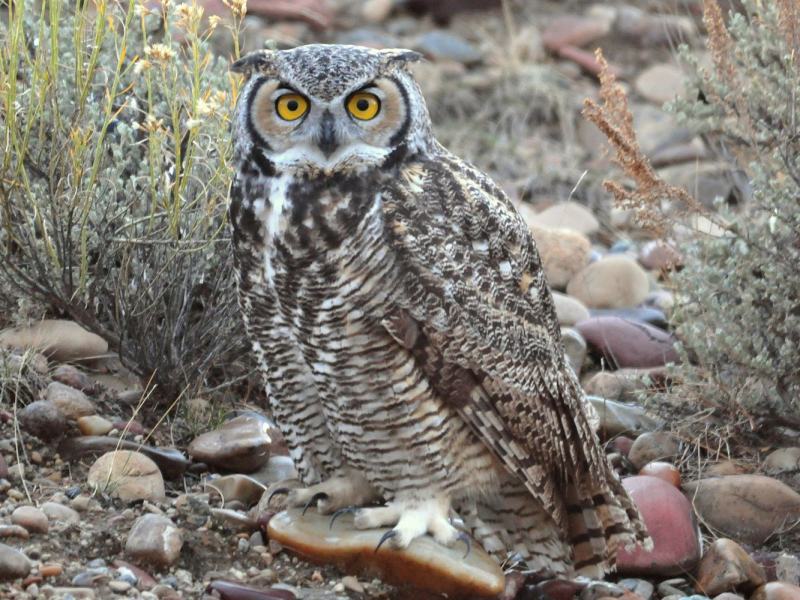
Via: The Spruce 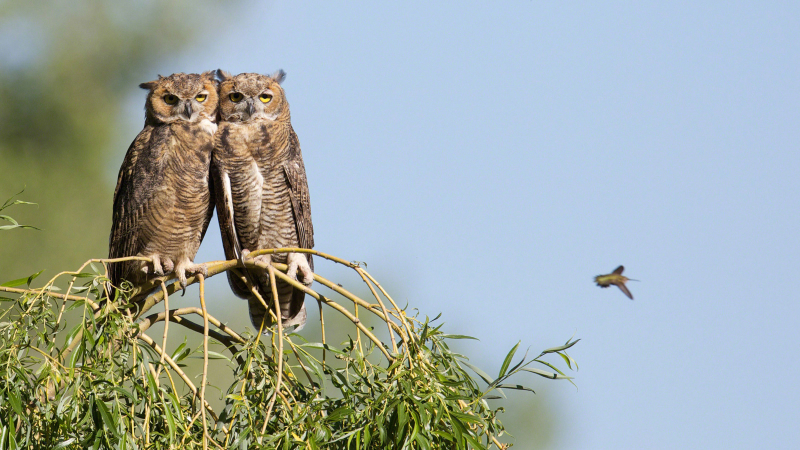
Via: National Audubon Society -
Barred owls, whose habitat includes much of the eastern United States and southeastern Canada, are smaller than great horned owls. They have a wingspan of roughly 110 cm, and weigh between 630 and 800 grams (1.4 and 1.8 pounds), and (43 inches). Barred owl attacks on hikers have been documented everywhere from Texas to British Columbia.
A weird, well-known homicide in North Carolina was believed to have involved a barred owl. A man was found guilty in 2003 of killing his second wife with a fireplace blow poke. The forensic evidence pertaining to the murder weapon was dismissed by a judge in 2011 after the individual had served a number of years in jail. Shortly after, the defense team for the defendant suggested that a barred owl was to blame for the victim's demise after hearing about barred-owl assaults in the Pacific Northwest and reexamining the wounds on the victim's scalp, face, and wrists.
The woman, who was intoxicated and using painkillers at the time, was allegedly assaulted by a barred owl in her front yard, according to the defense. Before the victim was able to fight it off and free it as she ran into the house, the owl had been tangled in her hair and was continuing to scratch and peck. After climbing the stairs to the second floor, the attorneys suggested that the victim had then fallen back down the stairs to her death, breaking her neck. In 2017 the defendant plead guilty to voluntary manslaughter, which allowed him to maintain his innocence.
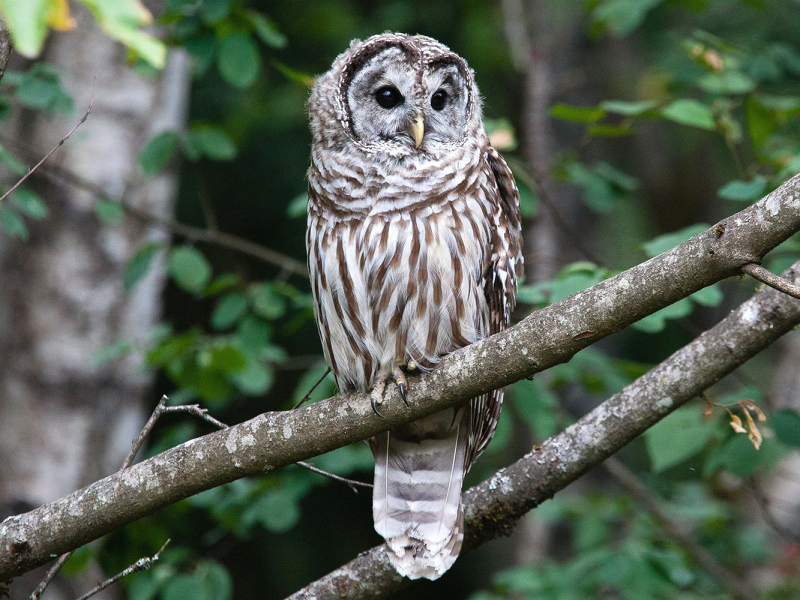
Via: The Spruce 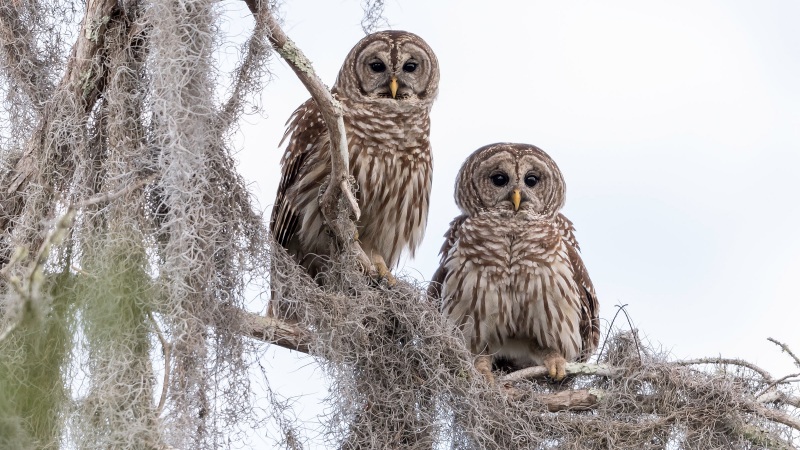
Via: National Audubon Society -
The Great Northern Loon is a large diving bird also known as a common loon. Their length ranges from 24 to 39 inches, and their wingspan can reach 60 inches. The Great Northern loon's spear-like beak is its most distinctive characteristic. In the Northern United States, Canada, and Greenland, these migratory birds spend their summers in lakes and ponds. They travel south throughout the winter to the Pacific and Atlantic coasts.
You could infer from appearances that the Great Northern Loon's sharp beak is what endangers people. Similar to how they attack their natural predators like bald eagles, gulls, sea otters, ravens, or skunks, they aim for the head or neck. The effects of such a spear-like beak attack might be disastrous.
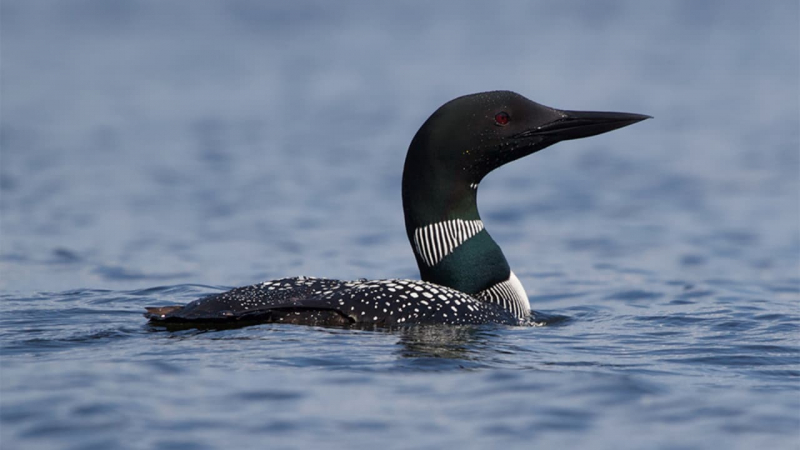
Via: Bird Watchers Guide 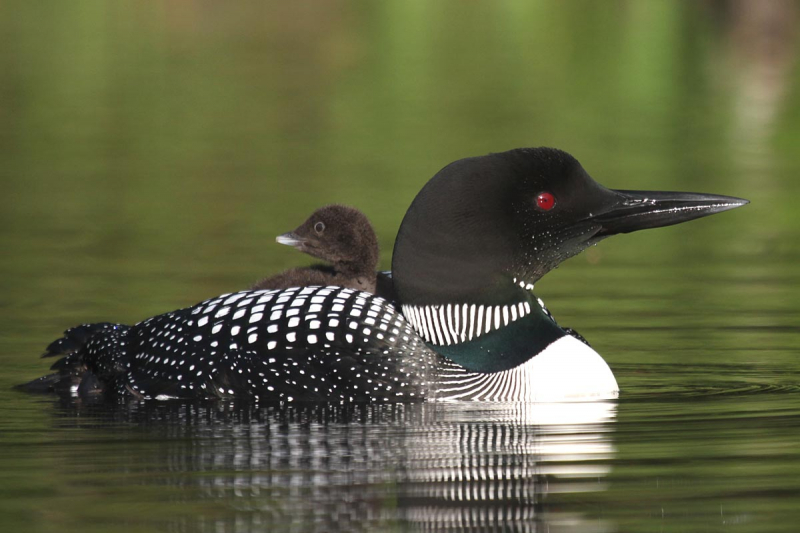
Via: Naturally Curious with Mary Holland -
The Australian magpie is probably the most dangerous bird in the country, after Southern Cassowary. Most of Australia's grasslands, farms, parks, and gardens are home to this medium-sized bird. The adult Australian magpie is a fairly robust bird ranging from 37 to 43 cm (14.5 to 17 in) in length, with distinctive black and white plumage, gold-brown eyes, and a solid wedge-shaped bluish-white and black bill. When nesting season begins in the spring, Australian magpies become extremely combative. To safeguard their nest, they act in this way. They would attack you without hesitation if they perceived you to be a threat.
Since residential areas (streets and parks) make up part of Australian magpies' natural habitat, you should exercise caution if you choose to live nearby. Magpies would swoop down and attack intruders if they felt threatened. It could result in serious wounds to the skin or eyes.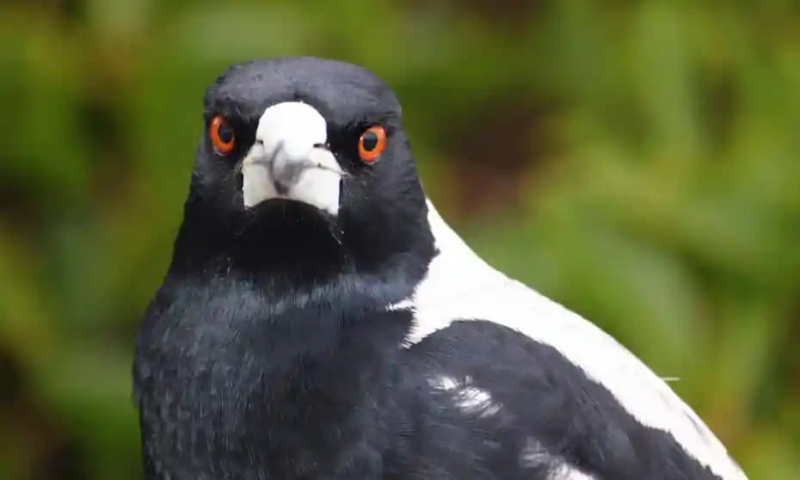
Via: The Guardian 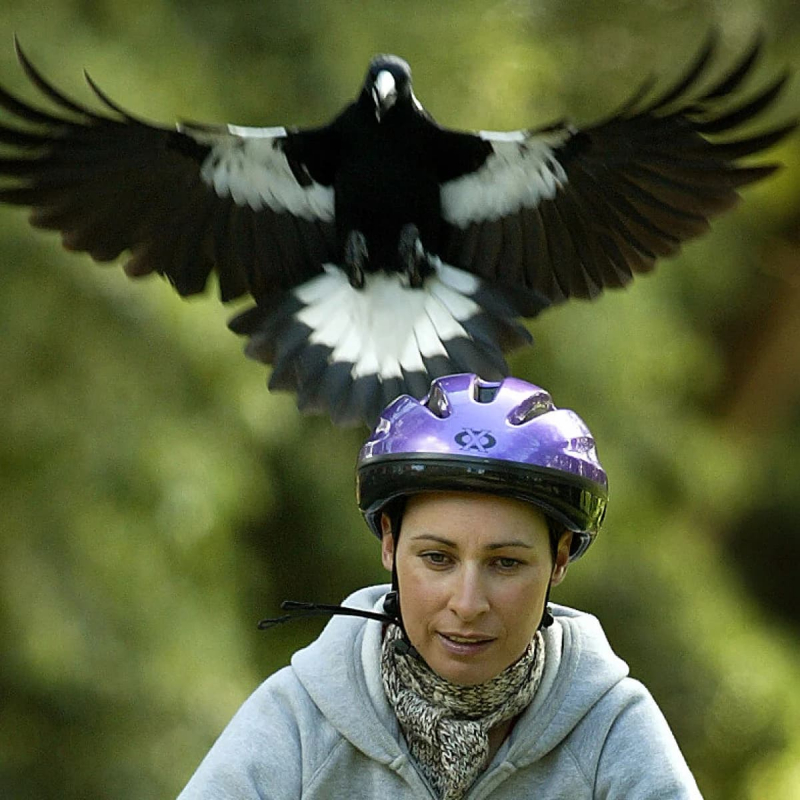
Via: Mashable -
The European herring gull (Larus argentatus) is a large gull, up to 66 cm (26 in) long. One of the best-known of all gulls along the shores of Western Europe, it was once abundant. Northern Europe, Western Europe, Central Europe, Eastern Europe, Scandinavia, and the Baltic States are all regions where it breeds. Many European herring gulls are year-round residents, for example in Ireland, Britain, Iceland, or along the North Sea coastlines. Some, particularly those who live in harsher climates, move further south in the winter. They eat a variety of foods, such as fish, crabs, and some plants. They are also scavengers, eating carrion and food that humans have left behind or taken. They have razor-sharp, up to 2.6-inch long bills, and a wing span of 49 to 61 inches. So, the herring gull assaults did indeed result in serious injuries.
European herring gulls attack during the nesting season, much like other birds do. These birds strike as a group, so you should keep your distance. One herring gull will promptly appeal for assistance from other adult birds if it is alone and being disturbed. European herring gulls would launch a mass attack in response to such an occurrence.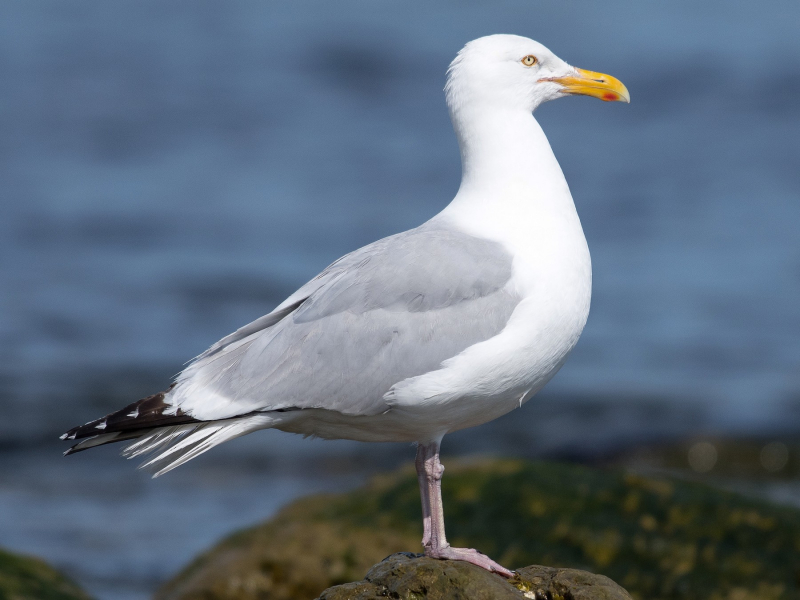
Via: eBird 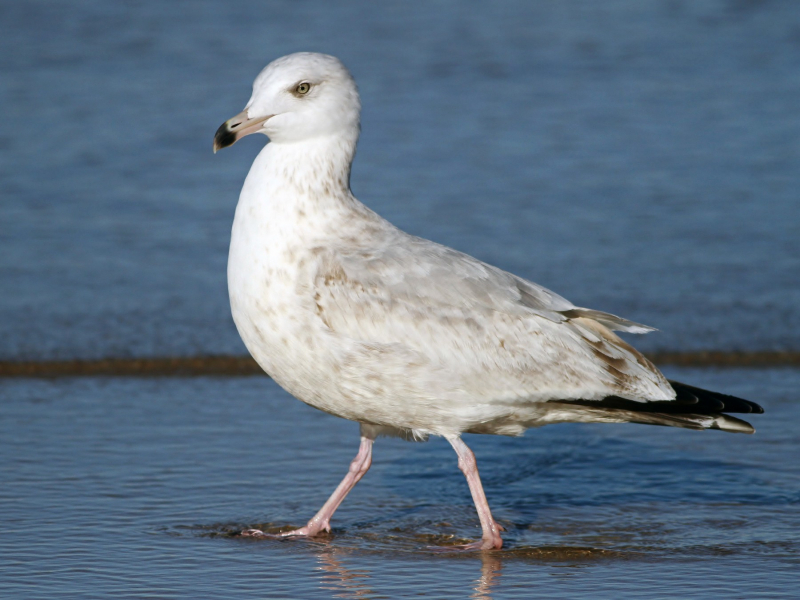
Via: eBird -
The most common and well-known big hawk in North America is the red-tailed hawk, a massive bird with broad wings built for smooth soaring. It lives in open areas and is frequently spotted perched on light posts by the side of the road or flying over farms and forests. Although the distinctive reddish-brown tail serves as a good indicator of an adult, the rest of their plumage can be fairly diverse, especially west of the Mississippi: The color of a Western Red-tail can vary from black to rufous-brown to almost white.
As you might anticipate, red-tailed hawks' primary weapon is their set of strong talons. That is precisely what you need to be terrified of. Red-tailed Hawks zealously protect their home ranges. When you enter their territory, they turn hostile and start to attack you with their strong talons. It might cause serious injury.
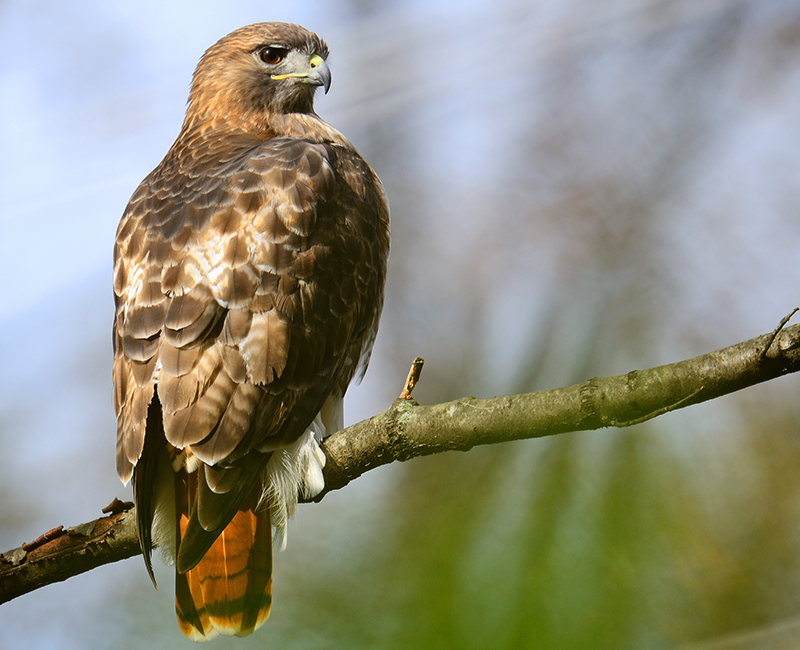
Via: NYC.gov 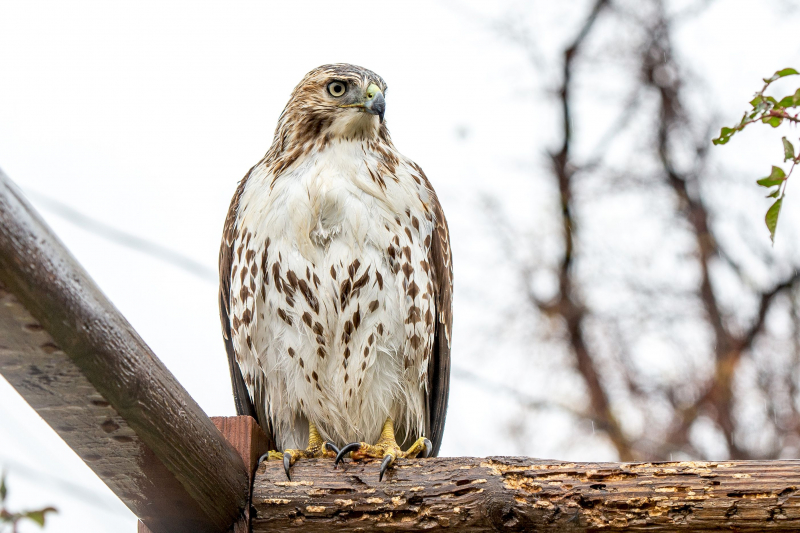
Via: The Spruce















